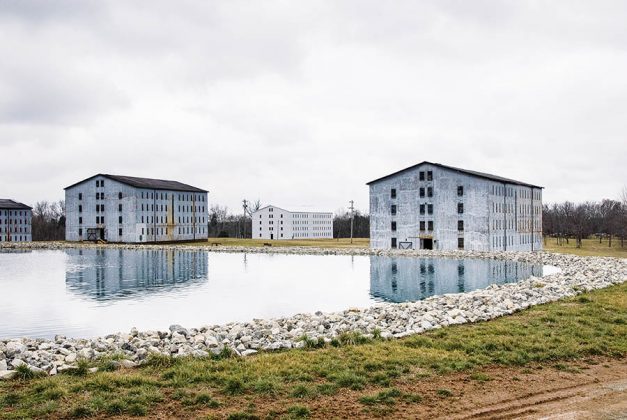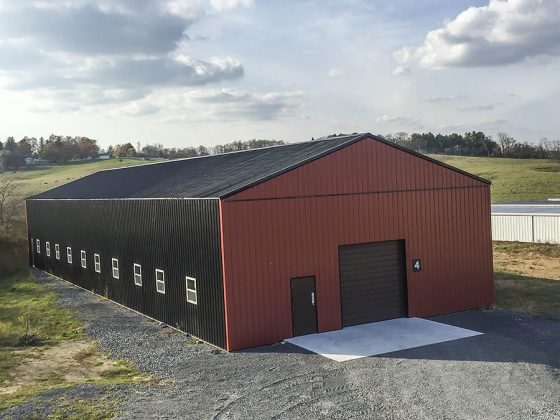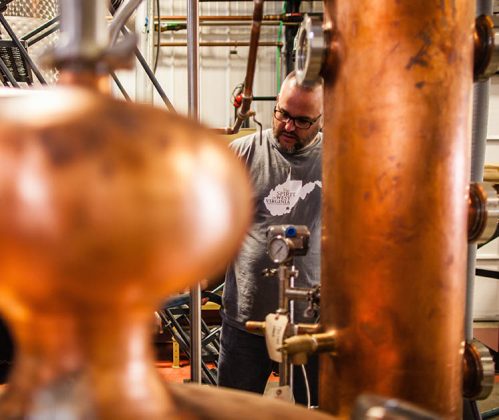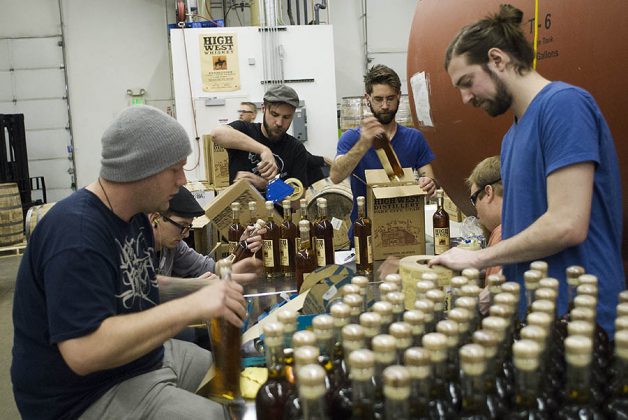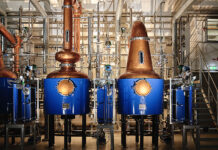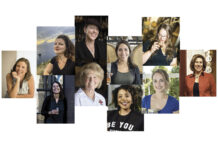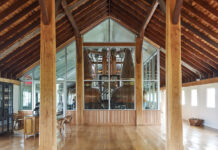“Always in motion is the future,” said Yoda in The Empire Strikes Back, proving once and for all that Yoda had never set foot inside a rickhouse.
A rickhouse is dim and motionless. And for a distiller, it’s his or her future, holding stocks that increase in value and can make or break their brand. Inside, one initially hears little other than the steady, dripping sound of cash as it flows from a distiller’s bank account to pay for overhead, all while waiting for the future to arrive.
One year. Three years. Five years pass. And then one day the aged distillate is deemed perfect. The cash drain slowly reverses, the ebb almost imperceptibly becomes a flow.
How to survive until red tips into black? That’s among the chief challenges faced by start-up distillers, aiming to sell aged spirits, who are looking to find a way across that formidable chasm of time, preferably generating some cash flow while doing so.
Several approaches are common: Using smaller barrels in an attempt to speed up the maturation process. Initially launching with unaged white spirits like moonshine, vodka or gin. And buying bulk aged spirits from another producer, bottling it as one’s own and jumping into the market while waiting for their own aging spirits to mature.
No approach is ideal. Small barrels can yield spirits that taste immature, with a grassy, grainy aroma that can define one’s brand, not necessarily in a good way. White spirits—especially from new producers—glut many regional markets, and competition is brutal for backbar and retail shelf space. And sourcing bulk spirits… well, this has advantages, but not without some significant pitfalls.
Terry Thome is president and owner of J.B. Thome & Co., a spirits brokerage and reseller that’s been in business for 40 years. He’s worked with numerous clients over the years, including many looking to source bulk spirits to launch their business while waiting for their own to catch up. A few buy “off-the-shelf” from a single producer, but Thome estimates that 90 to 95 percent of his bourbon and whiskey sales are to clients who buy from two or more suppliers, and then blend it themselves. “They might buy a four-year-old bourbon from Tennessee and mix it with a six-year-old from Indiana and a three-year-old from Kentucky, and try to match the taste profile they’re looking for.” Others will source spirit and “add maybe 25 or 50 percent of their own distillate to the sourced product,” with the idea of eventually transitioning to selling solely their own product, he said.
“It’s an intelligent way to go,” he adds, “rather than throwing two or three million into something and in the end finding out that you don’t have the way to distribute it properly, or the right sales approach. The three-tier system is not like selling hardware. You can have the best product in the world, but if you can’t make it stand out, it’s not going to sell.”
Whatever the approach, Thome says, “full transparency is the way to go.” The days of masking the source behind a fanciful story or “family history” are over. Increasingly savvy consumers want to know where the spirits are from; it’s best to be up front about it.
Those who aren’t may face some less-than-favorable publicity and consumer pushback—as WhistlePig and Templeton initially discovered.
So did Dave Perkins, who launched his High West brand in 2009. He started with a 250-gallon Holstein still and plans to produce all his own whiskey. Then Jim Rutledge, the distiller at Four Roses and a mentor to Perkins, told him about some good aged whiskey that was available and suggested he bottle and sell that.
Perkins’s first thought was, “Nobody does that.” But then Rutledge pointed out that Kentucky had eight distilleries and three or four hundred brands. “Do the math,” he suggested.
Perkins did. He liked the numbers. And so he started buying stock from the old Seagram distillery in Indiana (now MGPI), then blending and bottling the barrels. “Once I started getting into it, it was a no-brainer.”
Perkins has been credited for being up front about his sourcing from the outset. But that didn’t insulate him from all critics. “The first pitfall was that we got a rash of shit for that,” he says.
Whiskey writer Chuck Cowdery, for one, singled out High West in 2010 for burying the details in “the fine print” and coined a new phrase: Potemkin Craft Distillery. “I am skeptical in part because no one who has taken this approach has subsequently replaced their third-party product with a house-made one,” Cowdery explained.
Since then, High West has acquired a 1,500-gallon Forsythe still and now has three of its own Utah-made whiskeys sold under the High West label—two white whiskeys, and its new Valley Tan, based on an early Mormon recipe (yes, there was such a thing).
“Our strategy has been to make and sell delicious whiskey,” says Perkins, “and that includes making our own and also buying and blending.”
John Foster and John Little at Smooth Ambler Spirits in West Virginia also started out making their own spirits, and then added sourced whiskey afterwards.
They launched with a vodka, gin and a young bourbon they called “Yearling.” Business was solid but slow. An industry friend suggested that they buy bulk-aged whiskey, bottle it and sell it while they waited for their own whiskey to age.
“It really hadn’t occurred to us to do that,” said Foster, who noted that they were opposed to this sort of sourcing—it seemed like a cheat. But then they tasted some available whiskey, “and we legitimately loved it,” he said. “That changed our minds.” They realized it wasn’t the sourced whiskey that they disliked in the industry; it was the “bullshit story about the old family recipe.”
Foster and Little added a sort of extra firewall against accusations of deception when they rolled out their sourced line by creating two separate brand identities. While they continued to sell their own product under the Smooth Ambler label, the sourced whiskey was sold as Old Scout.
“Sourced will always be sourced and homemade will always be homemade,” says Foster. “We’re proud of both, and never the twain shall meet.”
Foster adds that having a brown spirit helped them open doors with retailers and bartenders. “When we started out, retailers didn’t want vodka,” he recalls. But having a snifter-ready whiskey helped conversations get started, which he anticipates will continue as they roll out their own aged whiskey in the coming months.
New Riff Distilling was founded in Kentucky in 2014, just across the
river from Cincinnati. About half of the 7,400 barrels it produces each year are destined for contract producers. New Riff plans to sell its own aged whiskey starting in 2018, after four years in
the barrel.
In the meantime, it’s launched a 10-year-old whiskey sourced from Indiana called OKI (named after Ohio, Kentucky, Indiana). “Our use of OKI is as an introduction,” says production manager Jay Erisman. “This is kind of a placeholder, to get introduced into the marketplace, to allow bartenders to get to know us. The point is not to blow through our stock and make money, but to get out there.”
OKI also has a built-in obsolescence—Erisman anticipates that when the stocks are gone, the brand will disappear as well. “And that’s OK,” he says, as their efforts will then shift to marketing their self-produced whiskey.
This model of sourced as transitioning into house-made liquor has been most commonly used for whiskey (some, such as Smooth Ambler, have also sourced rum), but today it’s not as easy as when the pioneers like High West and Smooth Ambler got into
the market.
David Perkins at High West said supplies of aged whiskey started to dry up about five years ago—which is when he signed contracts for new-make to be aged for him on an ongoing basis.
And Terry Thome, the bulk spirits reseller and broker, says that even those who can source aged whiskey face an uphill climb. As recently as 2011 he could turn up good, aged Kentucky bourbon for around $550 a barrel. Today, the price is typically $3,000 or more per barrel. (He’s heard of some distillers asking for $4,000 to $6,000 for especially desirable barrels.) At these prices, a rebottler will need to be priced at a minimum $50 a bottle for producers to turn a profit — a daunting price point for a brand that precisely zero customers have heard of.
Add the pricing of sourced liquor to the complex puzzle that is successfully launching a new distillery.

